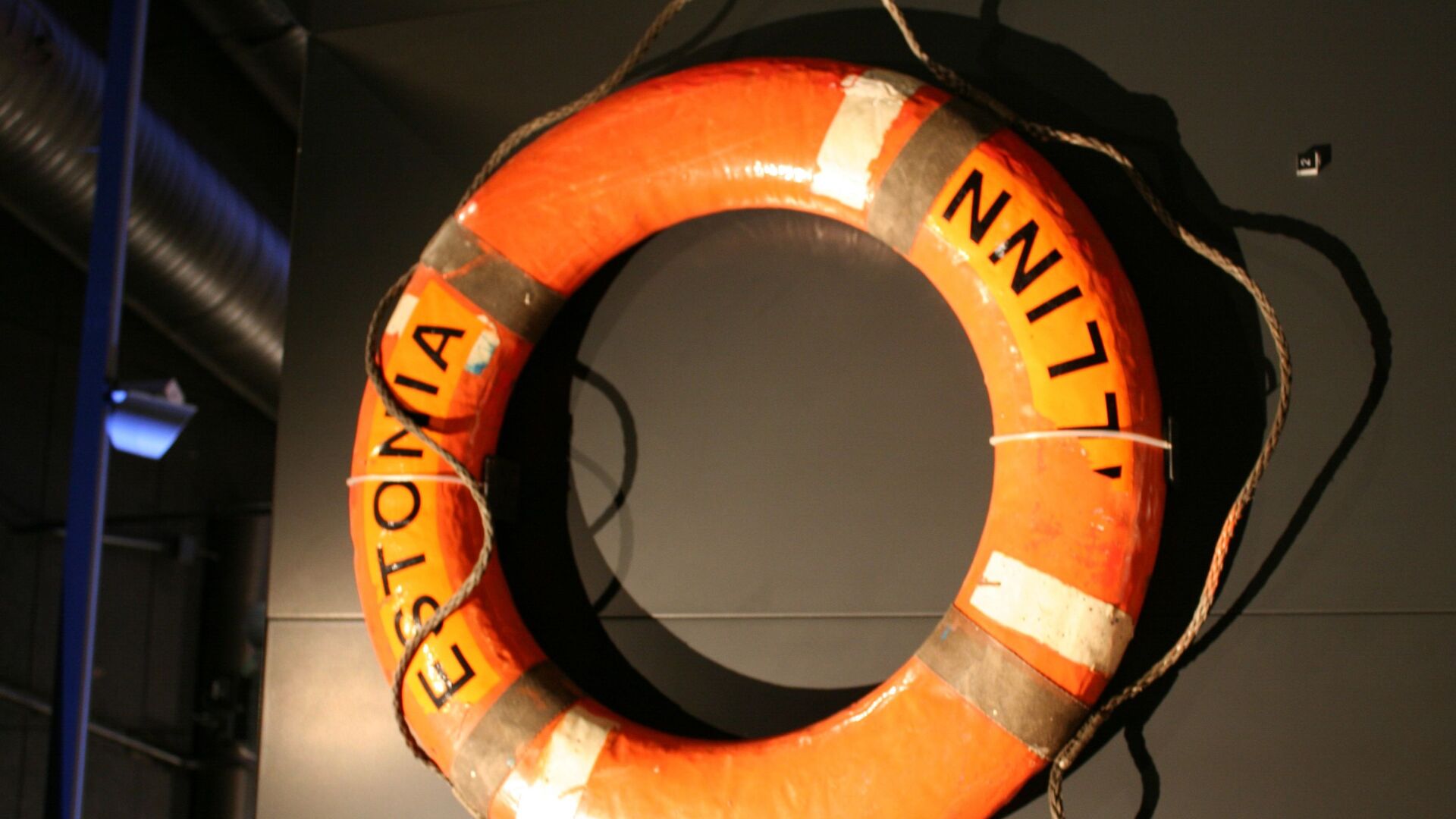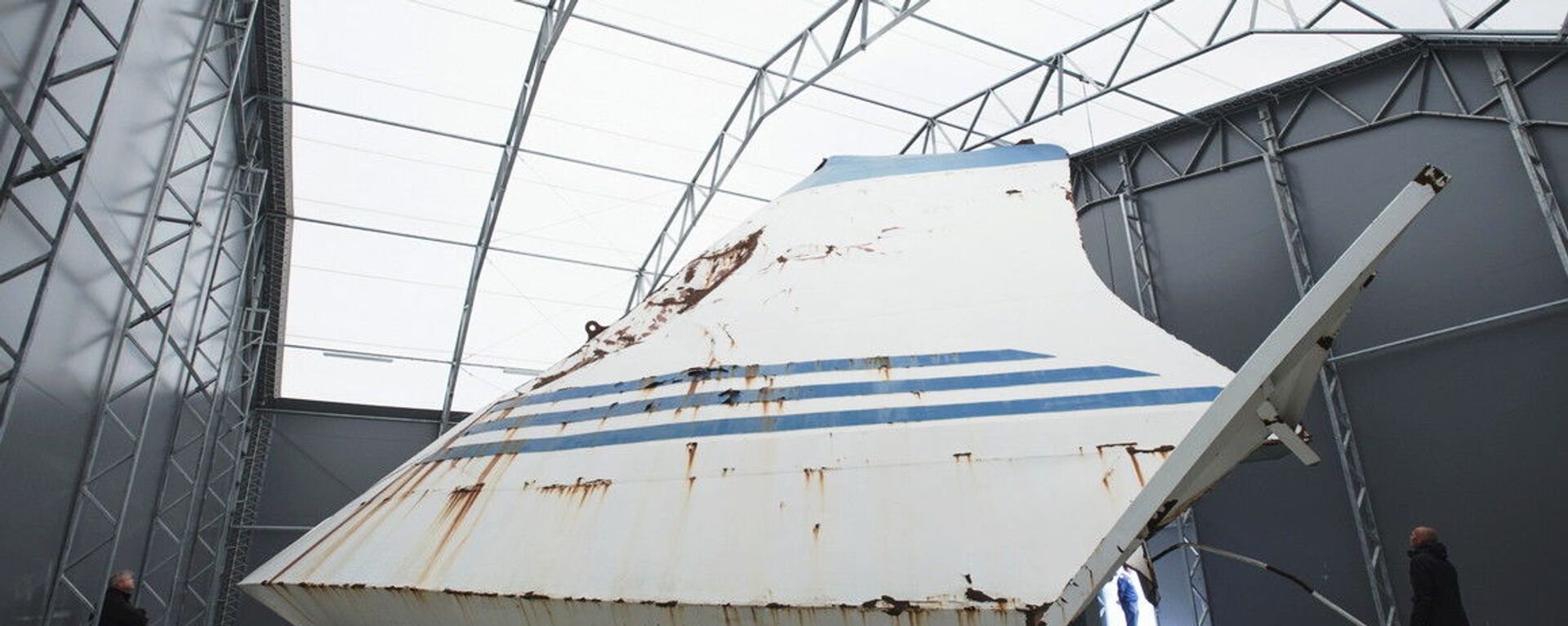https://sputnikglobe.com/20221223/sweden-confirms-baltic-titanic-was-used-for-secret-military-transports-1105717878.html
Sweden Confirms 'Baltic Titanic' Was Used for Secret Military Transports
Sweden Confirms 'Baltic Titanic' Was Used for Secret Military Transports
Sputnik International
The Estonia’s sinking in 1994 killed 852 people and is seen as the second-worst peacetime maritime disaster, ranking only behind the Titanic. With decades... 23.12.2022, Sputnik International
2022-12-23T09:07+0000
2022-12-23T09:07+0000
2022-12-23T09:07+0000
world
sweden
estonia
baltic sea
ferry
sunken ferry
maritime
maritime security
https://cdn1.img.sputnikglobe.com/img/07e4/0a/0e/1080765247_0:14:3073:1742_1920x0_80_0_0_3e8cdd9a6c2728ee3264d47cbc7f5830.jpg
In a sensational confession, the Swedish Armed Forces have admitted that the Estonia passenger ferry, whose demise in 1994 is seen as one of the worst maritime disasters of the 20th century, was used for secret military transports. Ever since the Estonia sank on September 28, 1994, there have been rumors that the ferry had military cargo on board on the night of the accident. The accident commission appointed shortly afterwards dismissed the rumors as unsubstantiated fantasies. However, in 2004 Swedish media revealed that at least on two occasions, two weeks and one week before the accident, cars loaded with military gear were transported to Sweden.In a new document, “a handful” of military transports from the Baltic countries with the Swedish Armed Forces as recipients were finally confirmed, yet without exact dates. However, the document features “electronic equipment without any connection to weapons systems” transported in civilian vehicles.The Armed Forces' written response also cited “Project Baltic Support”, a Swedish military aid program run in 1993-2003. Among others, the project included “equipment transferred to the Baltics” as well as “comprehensive training programs.”The somewhat belated and mostly involuntary admission comes in response to an ongoing re-investigation of the Estonia shipwreck following a groundbreaking documentary that revealed a previously unknown hole in the ship’s hull and sowed skepticism in the official version. As part of their work, the investigators queried the Armed Forces about the military transports.Previous investigations hinted that the Armed Forces may have organized the transports in collaboration with officials from Ericsson Group. The Swedish Customs had promised the military not to check the cars' loads, something it itself later confirmed.Questions RemainThe passenger ferry Estonia sank on the night of September 28, 1994, about halfway between Tallinn and Stockholm. 852 people died in the disaster, which is now sometimes referred to as the “Baltic Titanic”. 28 years later, it remains largely a mystery despite survivors’ numerous calls for justice.While a subsequent investigation formally placed the blame on a faulty bow visor that allowed thousands of tons of water to gush in, an abundance of alternative theories have flourished over the decades, including the Estonia being sunk by submarine. These theories, while officially dismissed as conspiracies, were nevertheless fueled by the Swedish government's hasty decision to drop thousands of tons of pebbles on the site and thereby turn the wreck into a sea grave. Furthermore, the so-called Estonia Act was quickly railroaded through, establishing the sanctity of the site and prohibiting citizens from the signatory counties from even approaching the wreck.Recently, 17 Estonia survivors penned an opinion piece in Swedish media, urging to add more resources and review the accident in its entirety. They stress that it took 27 years before they were allowed to testify and that the final report from 1997 didn’t fully agree with their experiences.“If during the 90s it was sensitive to investigate because of security policy issues and Sweden's need to assert its non-alignment, perhaps it can be seen differently now?”, the survivors wrote, alluding to Sweden’s vaunted vestiges of neutrality that went down in flames earlier this year as the Nordic country filed an application to join NATO.
https://sputnikglobe.com/20210712/new-investigation-of-largest-peacetime-maritime-catastrophe-in-baltic-sea-underway-1083364817.html
sweden
estonia
baltic sea
Sputnik International
feedback@sputniknews.com
+74956456601
MIA „Rosiya Segodnya“
2022
News
en_EN
Sputnik International
feedback@sputniknews.com
+74956456601
MIA „Rosiya Segodnya“
Sputnik International
feedback@sputniknews.com
+74956456601
MIA „Rosiya Segodnya“
estonia disaster, baltic titanic, estonia sinking 1994, swedish military, questions about the estonia demise, secret military transports
estonia disaster, baltic titanic, estonia sinking 1994, swedish military, questions about the estonia demise, secret military transports
Sweden Confirms 'Baltic Titanic' Was Used for Secret Military Transports
The Estonia’s sinking in 1994 killed 852 people and is seen as the second-worst peacetime maritime disaster, ranking only behind the Titanic. With decades having gone by, questions about the tragedy abound, despite survivors’ numerous calls for justice.
In a sensational confession, the Swedish Armed Forces have admitted that the Estonia passenger ferry, whose demise in 1994 is seen as one of the worst maritime disasters of the 20th century, was used for secret military transports.
Ever since the Estonia sank on September 28, 1994, there have been rumors that the ferry had military cargo on board on the night of the accident. The accident commission appointed shortly afterwards dismissed the rumors as unsubstantiated fantasies. However, in 2004 Swedish media revealed that at least on two occasions, two weeks and one week before the accident, cars loaded with military gear were transported to Sweden.
In a new document, “a handful” of military transports from the Baltic countries with the Swedish Armed Forces as recipients were finally confirmed, yet without exact dates. However, the document features “electronic equipment without any connection to weapons systems” transported in civilian vehicles.
The Armed Forces' written response also cited “Project Baltic Support”, a Swedish military aid program run in 1993-2003. Among others, the project included “equipment transferred to the Baltics” as well as “comprehensive training programs.”
The somewhat belated and mostly involuntary admission comes in response to an ongoing re-investigation of the Estonia shipwreck following a groundbreaking documentary that revealed a
previously unknown hole in the ship’s hull and sowed skepticism in the official version. As part of their work, the investigators queried the Armed Forces about the military transports.
“At the beginning of the 90s, the Baltic states were newly independent and the Soviet Union had fallen, so there was certainly a great interest, among others, within the Swedish Armed Forces in getting military equipment from there,” Jonas Backstrand, chairman of the Estonia investigation at the State Accident Commission told Swedish media, citing interviews with both current and former employees of the Armed Forces.
Previous investigations hinted that the Armed Forces may have organized the transports in collaboration with officials from Ericsson Group. The Swedish Customs had promised the military not to check the cars' loads, something it itself later confirmed.
The passenger ferry Estonia sank on the night of September 28, 1994, about halfway between Tallinn and Stockholm. 852 people died in the disaster, which is now sometimes referred to as the “Baltic Titanic”. 28 years later, it remains largely a mystery despite survivors’ numerous calls for justice.
While a subsequent investigation formally placed the blame on a faulty bow visor that allowed thousands of tons of water to gush in, an abundance of alternative theories have flourished over the decades, including the Estonia being sunk by submarine. These theories, while officially dismissed as conspiracies, were nevertheless fueled by the Swedish government's hasty decision to drop thousands of tons of pebbles on the site and thereby turn the wreck into a sea grave. Furthermore, the so-called Estonia Act was quickly railroaded through, establishing the sanctity of the site and prohibiting citizens from the signatory counties from even approaching the wreck.
Recently, 17 Estonia survivors penned an opinion piece in Swedish media, urging to add more resources and review the accident in its entirety. They stress that it took 27 years before they were allowed to testify and that the final report from 1997 didn’t fully agree with their experiences.
“If during the 90s it was sensitive to investigate because of security policy issues and Sweden's need to assert its non-alignment, perhaps it can be seen differently now?”, the survivors wrote, alluding to Sweden’s vaunted vestiges of neutrality that went down in flames earlier this year as the Nordic country filed an application to join NATO.





